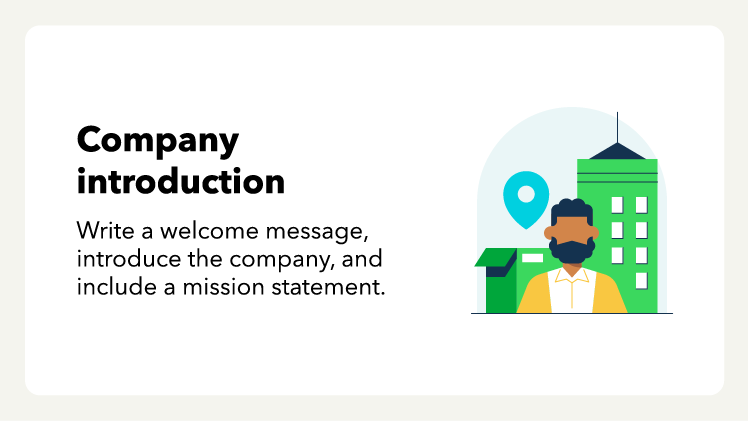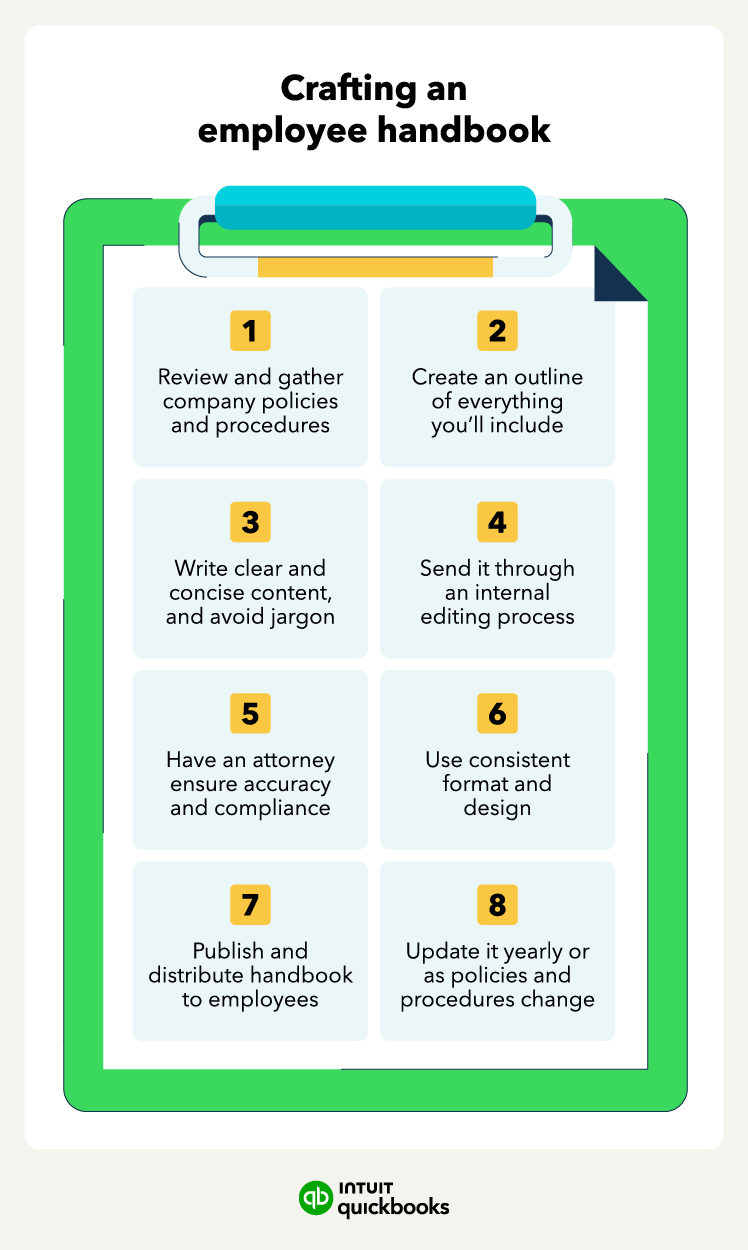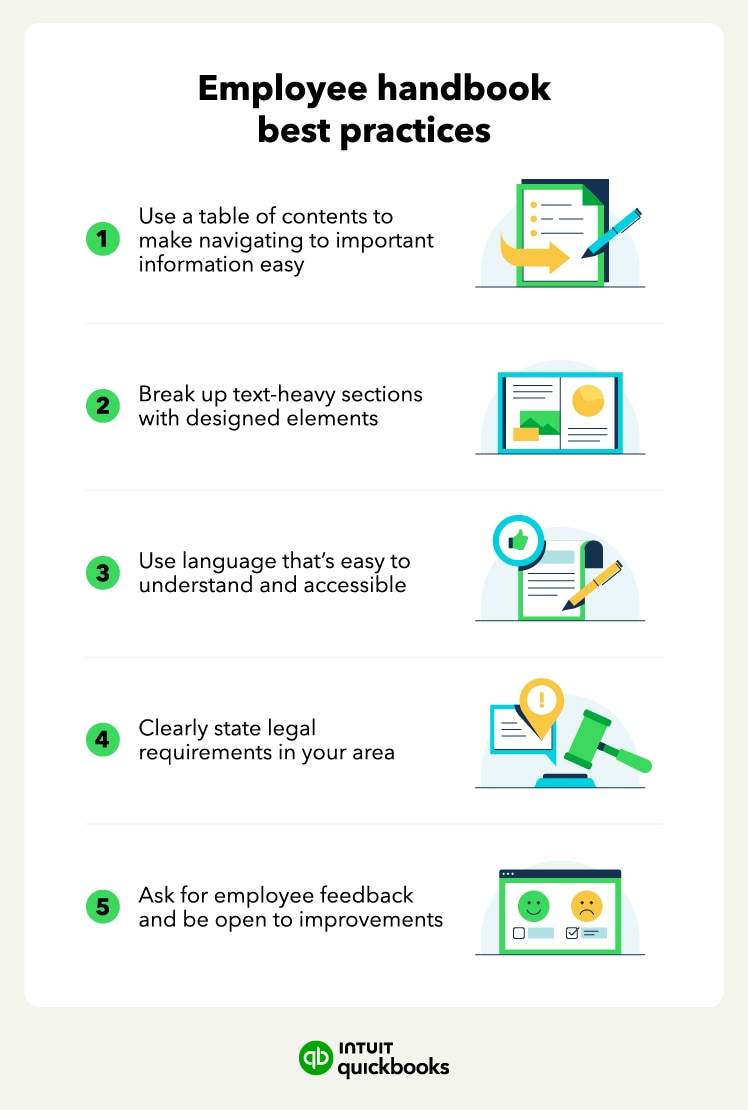When starting out, writing your employee handbook may feel like an overwhelming process. Handbooks are often dozens of pages long and steeped in legal ramifications. To make the process more manageable, break it down into simple steps.
Here’s how to create an employee handbook from start to finish.
1. Review company policies and procedures
Before writing your handbook, ensure you have the most up-to-date information. Review your company policies and procedures to ensure no recent changes affect your writing and creation process.
Most business owners create company policies as they run the business. You may, for example, have a process workers use to request time off. You’ve emailed a memo that explains the policy, but the information is not in a formal employee handbook. As a result, you’re not starting the writing process at zero because you’ve already created some policies.
2. Outline the handbook’s content
Once you’ve reviewed your policies and procedures, create an outline of everything you will include in your employee handbook. This includes any federal, state, or local requirements. Outlining your handbook first ensures you won’t miss any important information that can delay your process later on.
For example, a restaurant owner must manage many workers and deal with employee turnover, so the employee handbook can focus on hiring and termination policies.
3. Write clear and concise content
After you outline the handbook and start writing, use clear and simple language. Avoid jargon so your staff can understand your policies and provide links to more complex topics, such as laws and regulations. While a clearly written handbook will reduce questions, encourage your employees to ask if a policy is unclear to them.
4. Review the handbook
Send your handbook through an internal editing process to ensure your company voice and tone are present and consistent. Check for any errors or typos that can make your handbook look unprofessional.
5. Ensure accuracy and compliance
Your handbook must address a variety of employment and legal policies, including overtime pay, workplace harassment policies, and other issues. An employment attorney should review your manual to ensure you’re in compliance with federal, state, and local laws and regulations.
6. Format and design
Once your internal team and an attorney review your text, you can send your copy to be formatted and designed. This helps ensure your handbook is readable and allows you the chance to include company branding elements.
7. Publish and distribute
Many companies publish and distribute their employee handbooks electronically. While this is a great option to keep costs low, you should make physical copies of the handbook available to employees upon request.
8. Keep it up-to-date
Your employee handbook is only useful if it remains current. Should any company policies change, update your handbook to stay consistent. It’s also a good idea to recheck federal, state and local laws yearly to ensure your handbook is always legally sound.
Need help starting your own handbook? Our employee handbook template outlines important sections to consider and provides advice on how to fill in the blanks with your company’s info. Whether you need to know how to write an employee handbook for a small business or enterprise-size operation, this template can help you get started.

















